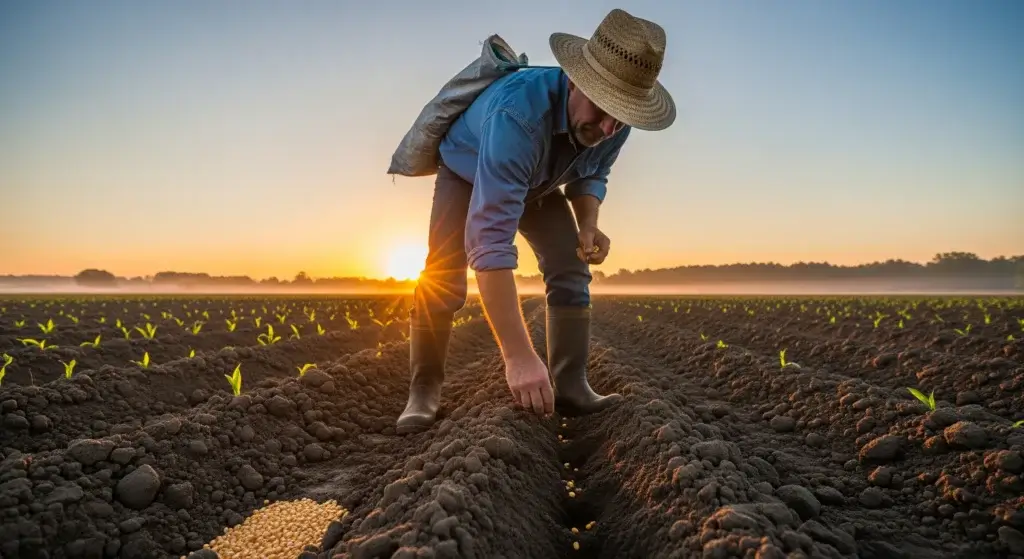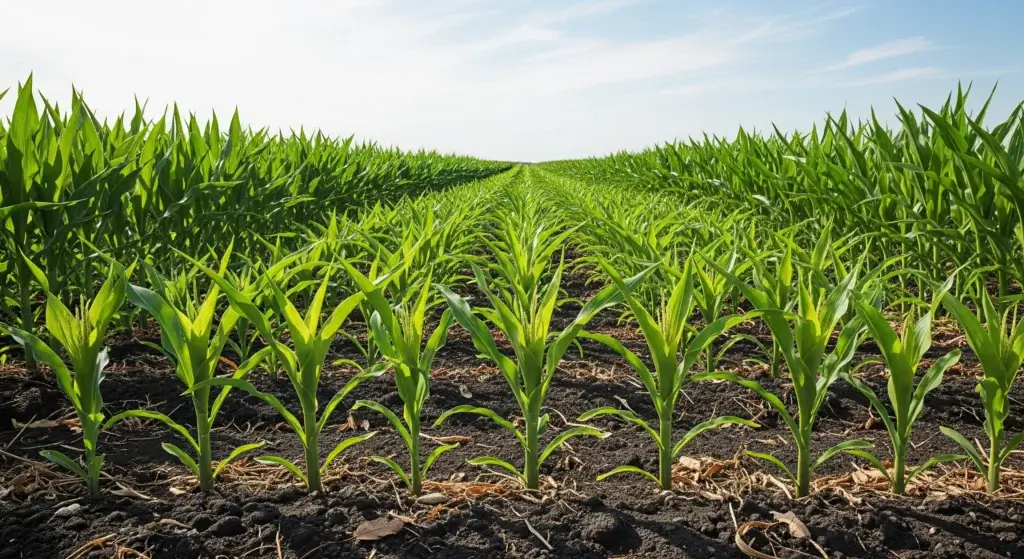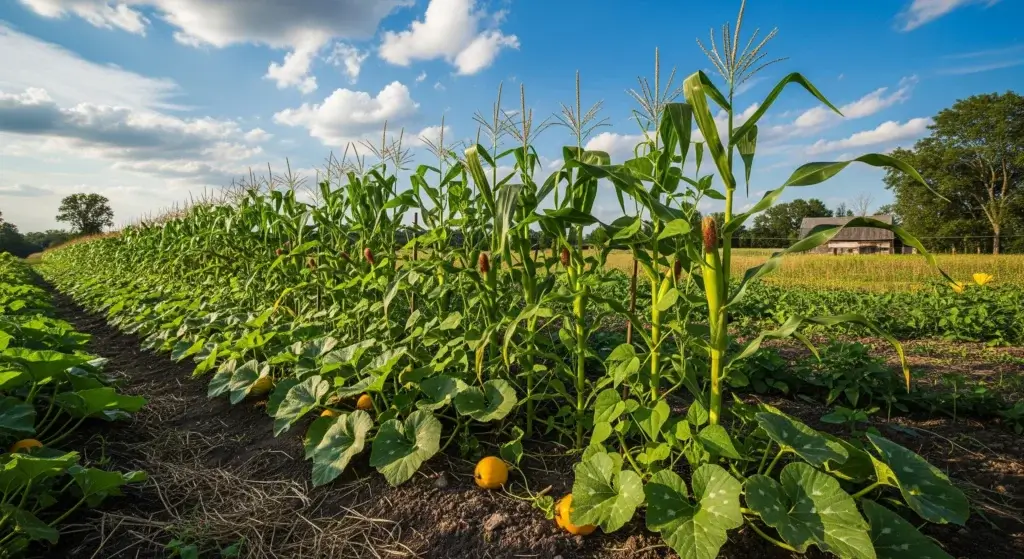
Broccoli is a popular and nutritious vegetable, but getting its watering requirements right is crucial for a successful harvest.
Understanding the water needs of broccoli during different stages of growth can help you provide the right amount of water, ensuring a healthy and productive crop.
In this blog post, we’ll explore the watering requirements for broccoli and provide tips for maintaining consistent moisture.
Understanding Broccoli’s Water Needs
Broccoli is a thirsty plant that relies on consistent moisture throughout its various growth stages to thrive and produce a bountiful harvest.
Whether it’s in the early stages of seedling development or during the crucial head formation phase, adequate watering is essential for optimal growth and yield.
- Read also: A Comprehensive Guide: Optimizing Spacing for Broccoli Plants
- Read also: Protecting Your Broccoli: Common Broccoli Diseases
Seedlings
During the initial stage of seedling growth, ample moisture is crucial for successful germination and the establishment of a robust root system.
It’s essential to keep the soil consistently moist, but not waterlogged, to provide the ideal conditions for seeds to sprout and seedlings to take root.
Vegetative growth
As broccoli plants progress into the vegetative growth stage, their water needs increase to support the development of lush foliage and sturdy stems.
Consistent watering is key during this phase to maintain optimal soil moisture levels and prevent stress on the plants.
Head formation
During the critical stage of head formation, sufficient water is essential for the development of the broccoli head.
Consistent watering is crucial to ensure that the plant receives the moisture it needs to produce a well-formed and flavorful head of broccoli.
Insufficient watering during this stage can lead to stunted head growth or poor-quality produce.
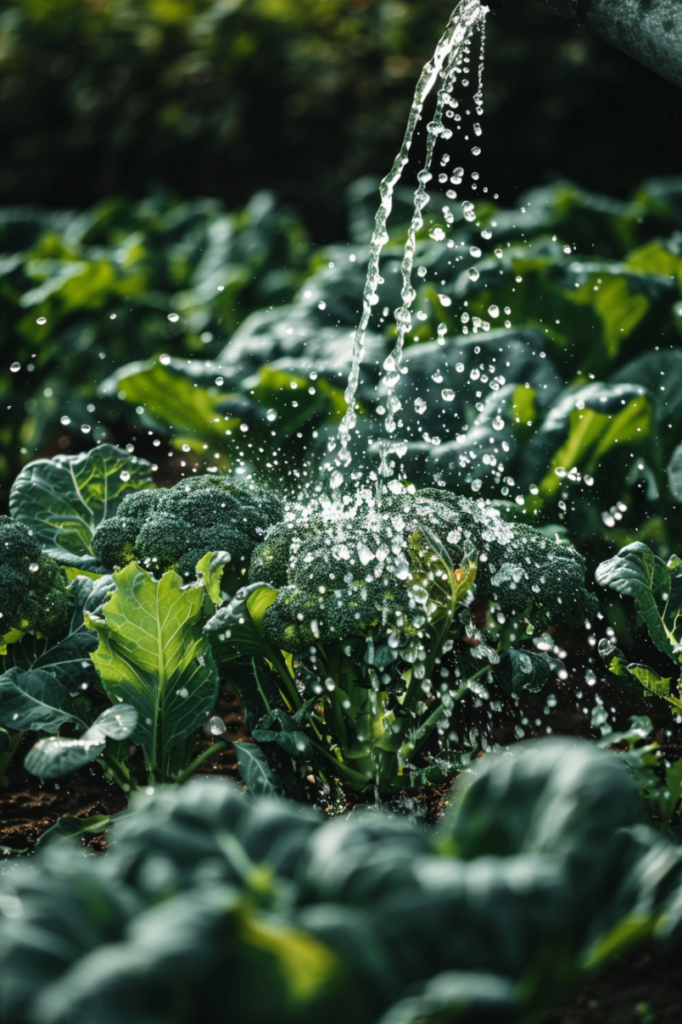
Watering Techniques for Happy Broccoli
Ensuring your broccoli receives the right amount of water is crucial for its health and productivity.
Here are several watering techniques to help you achieve optimal results:
Deep watering vs. frequent shallow watering
Deep watering involves saturating the soil to encourage deeper root growth, allowing the plant to access water more efficiently.
In contrast, frequent shallow watering only moistens the surface soil, leading to shallow root systems and potential root rot.
Aim for deep, thorough watering sessions rather than shallow, frequent ones to promote healthy root development and prevent waterlogged conditions.
How often to water
The frequency of watering broccoli depends on various factors, including soil type, temperature, and humidity levels.
Generally, broccoli plants require watering every 2-3 days, but this may vary depending on environmental conditions.
Monitor soil moisture regularly and adjust watering frequency accordingly to ensure plants receive adequate hydration without becoming waterlogged or dried out.
Tips for checking soil moisture
To determine when to water your broccoli plants, employ simple techniques to assess soil moisture levels:
- Insert your finger into the soil up to the first knuckle. If the soil feels dry, it’s time to water.
- Utilize a moisture meter to accurately measure soil moisture levels and gauge when watering is needed. These affordable tools provide instant feedback on soil moisture, helping you make informed watering decisions.
Watering methods
Choose appropriate watering methods that promote efficient water delivery and minimize water loss:
Overhead watering (sprinkler)
While convenient, overhead watering can result in water loss through evaporation and increase the risk of fungal diseases.
If using this method, water early in the day to allow foliage to dry before nightfall.
Soaker hose or drip irrigation
Opt for soaker hoses or drip irrigation systems to deliver water directly to the root zone, minimizing water waste and reducing the risk of fungal diseases.
These methods ensure efficient water delivery while preserving soil moisture and promoting healthy growth.
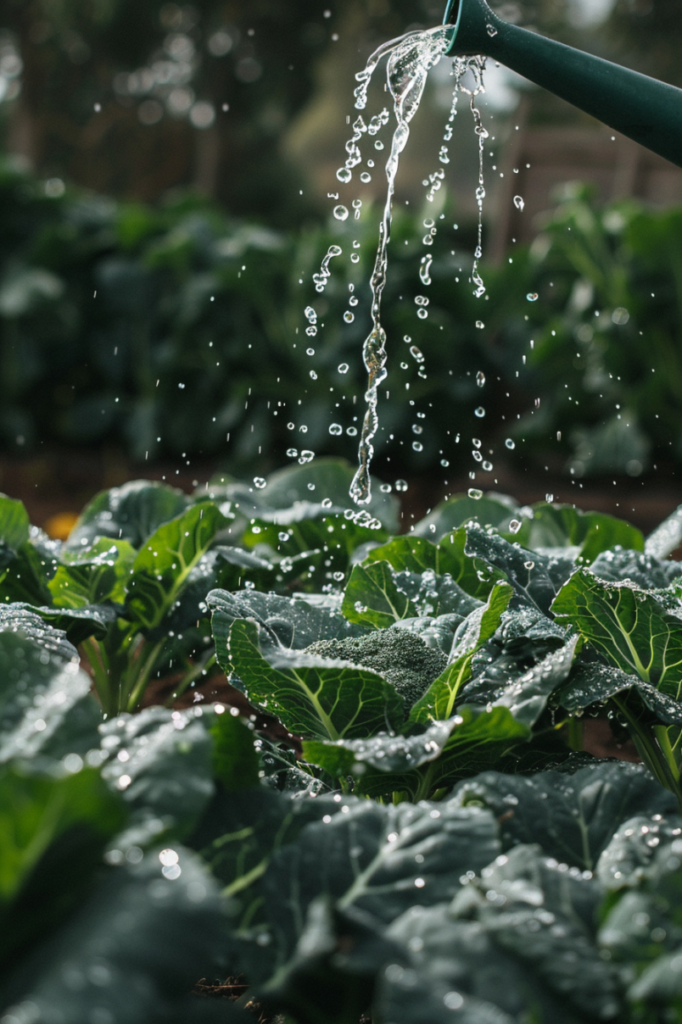
Signs of Overwatering and Underwatering Broccoli
Understanding the signs of overwatering and underwatering is essential for maintaining the health and vitality of your broccoli plants.
Here’s what to look out for:
Signs of overwatering
Overwatering occurs when plants receive more water than they need, leading to waterlogged soil and root suffocation.
Look for the following signs to identify overwatering in broccoli plants:
Yellow leaves
Excessive moisture can cause the leaves of broccoli plants to turn yellow and appear wilted.
This is often due to nutrient deficiencies caused by waterlogged soil inhibiting nutrient uptake.
Wilting
Surprisingly, wilting can also be a sign of overwatering.
While it may seem contradictory, waterlogged roots can’t absorb oxygen properly, leading to wilting despite the soil being overly wet.
Rotten smell
An unpleasant, rotten odor emanating from the soil is a clear indicator of overwatering.
This smell is caused by anaerobic bacteria thriving in waterlogged conditions, breaking down organic matter and producing foul-smelling gases.
Signs of underwatering
Underwatering occurs when plants don’t receive enough water to meet their needs, leading to stress and stunted growth.
Keep an eye out for the following signs of underwatering in broccoli plants:
Wilting
Just like with overwatering, underwatering can also cause wilting as the plant struggles to access sufficient water for hydration and nutrient uptake.
Dry leaves
Insufficient moisture in the soil can cause the leaves of broccoli plants to become dry, crispy, and brittle to the touch.
This is a clear indication that the plant is not receiving enough water.
Lack of growth
Broccoli plants that are underwatered may exhibit a lack of growth, with smaller leaves and slower development of new foliage.
Without adequate water, the plant’s metabolic processes slow down, hindering overall growth and productivity.
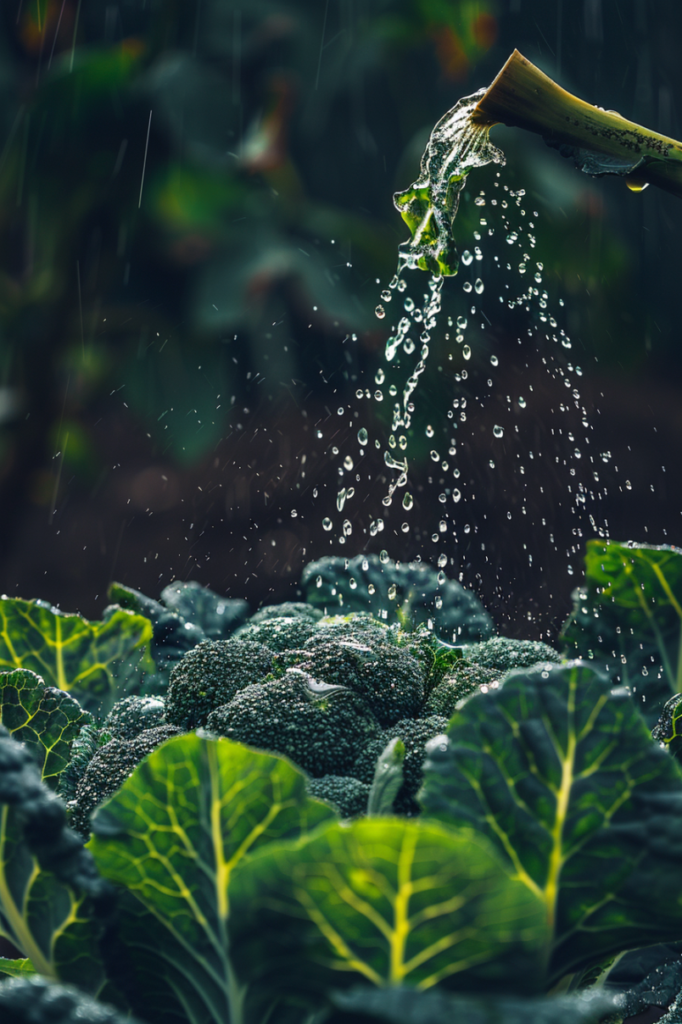
Tips for Maintaining Consistent Moisture
Mulching
Spread a 2-inch layer of mulch around the base of your broccoli plants.
Mulch acts as a protective barrier, helping to retain moisture in the soil and prevent weed growth.
This ensures that the roots stay hydrated and healthy, promoting optimal growth and development.
Grouping plants together
Planting broccoli in clusters or groups can help create a microclimate that retains moisture.
By grouping plants closely together, they can shield each other from excessive sun exposure and wind, reducing moisture loss through evaporation.
This also fosters a sense of community among the plants, allowing them to thrive together and maintain consistent moisture levels in the soil.
Early morning watering
Water your broccoli plants early in the morning to make the most of the cooler temperatures and lower evaporation rates.
By watering before the sun is at its peak, you can ensure that the moisture penetrates deep into the soil without being lost to evaporation.
Additionally, watering in the morning helps foliage dry quickly, reducing the risk of fungal diseases that thrive in damp conditions.
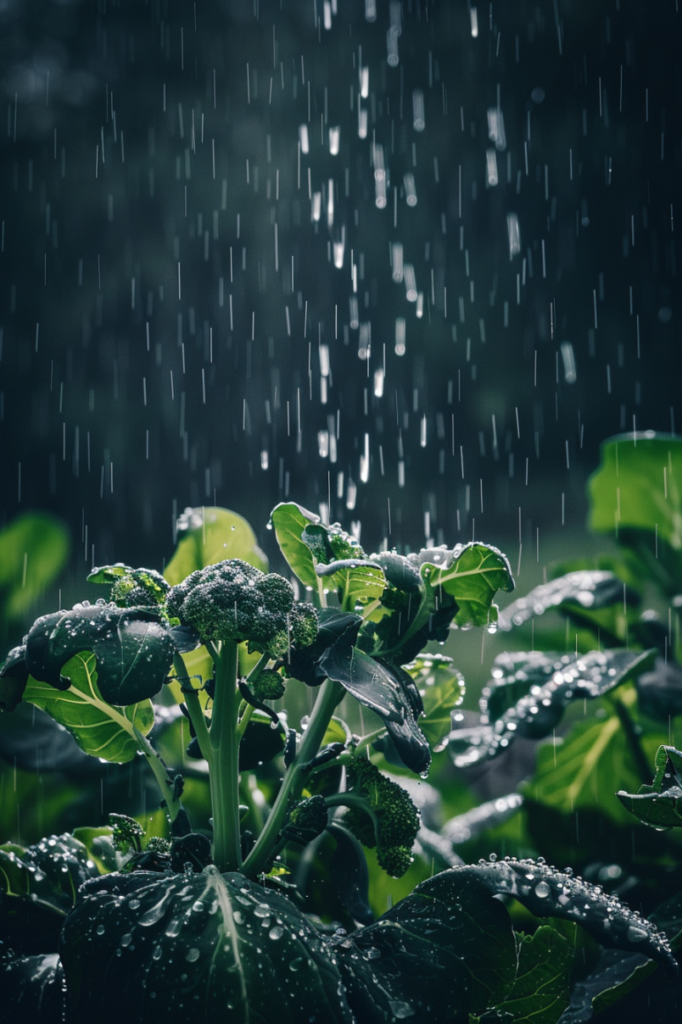
- Read also: Broccoli Care Mistakes: Master the Art of Growing Your Broccoli
- Read also: 5 Tips on Preventing Bolting in Broccoli Plants
Conclusion
Understanding the watering requirements for broccoli and implementing the right techniques can help you maintain healthy plants and enjoy a successful harvest.
By following the tips outlined in this blog post, you can ensure your broccoli receives the right amount of water, leading to a productive crop.

